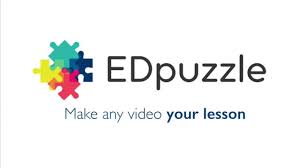Dec
2018
Digital Literacy for St. Cloud State University
++++++++++++++
more on 3D printing in this IMS blog
https://blog.stcloudstate.edu/ims?s=3d+printing
Company moves responsibility for users from Ireland to the US where privacy laws are less strict
Facebook has moved more than 1.5 billion users out of reach of European privacy law, despite a promise from Mark Zuckerberg to apply the “spirit” of the legislation globally.
April 19, 20182:50 AM ET SCOTT NEUMAN https://www.npr.org/sections/thetwo-way/2018/04/19/603824213/facebook-to-offer-users-opt-outs-that-comply-with-new-european-privacy-rules
Facebook CEO Mark Zuckerberg, who offered congressional testimony last week, has also been asked to appear before the European Parliament.
As we reported earlier this week, a federal judge in California ruled that Facebook could be sued in a class-action lawsuit brought by users in Illinois who say the social media company improperly used facial recognition to upload photographs.
Also on Wednesday, TechCrunch reports that Facebook is investigating a security research report showing that its user data is vulnerable to third-party JavaScript trackers embedded on websites offering the “Login With Facebook” feature.
+++++++++++++++++
more on privacy in this IMS blog
https://blog.stcloudstate.edu/ims?s=privacy
Where | Къде: СУ „Димитър Матевски“ https://goo.gl/maps/rojNjE3dk4s and online ( виртуално)
When | Кога: 2. май, 2018, 14 часа | May 2, 2018, 2PM local time (Bulgaria)
Who | Кой: преподаватели и педагози | teachers and faculty
How | Как: използвайте “обратна връзка” за споделяне на вашите идеи | use the following hashtag for backchanneling #BGtechEd
short link: http://bit.ly/teachassess |

Live stream: |
Тема1. Сравняване на Kahoot, Edpuzzle и Apester – 1-1, 1/2 час продължителност
Topic 1: A comparison of Kahoot, Apester and EdPuzzle
definitions | термини : BYOD (BYOx), flipped classroom, formative assessment (vs summative assessment)
| Kahoot (https://kahoot.it/) – 10 мин. | |
 |
|
| Apester (https://apester.com/ )– 10-15мин. | |
| |
|
| Edpuzzle (https://edpuzzle.com )– 10 – 15мин. | |
 |
https://edpuzzle.com/assignments/5ad4cad48f4df34107c58bd0/watch |
Тема 2. Виртуална реалност в учебния процес – теория и практика- 1-1, 1/2 час продължителност
Topic 2. Virtual reality in teaching and learning – theory and hands-on
When a student is brilliant on the street corner but falling asleep in class, something is wrong with the schooling system
Ако учащ се е страхотен на ъгъла на улицата, но се проваля или заспива в клас, тогава нещо е грешно с учебната система
https://blog.stcloudstate.edu/ims/2018/04/17/education-teched-frenemies/
VR can be inexpensive and effective | Виртуална / разширена реалност може да бъде ефикасна и ефективна: https://blog.stcloudstate.edu/ims/2018/04/26/teaching-virtual-reality/
https://www.linkedin.com/groups/2811/2811-6391674579739303939
Definitions for VR/AR/MR | дефиниции на: виртуална реалност; разширена реалност; смесена реалност
https://blog.stcloudstate.edu/ims/2018/03/21/t4tl-games-and-vr-library/
#3 from the following blog entry: https://blog.stcloudstate.edu/ims/2018/04/17/practical-about-vr-and-ar-in-schools/ (go beyond storytelling)
++++++++++++++
Additional Information | Дпълнителна литература/информация
https://blog.stcloudstate.edu/ims/2016/02/22/formative-assessment-ideas/
Formative Assessment Tools: https://blog.stcloudstate.edu/ims/2016/01/13/formative-assessment-tools/
https://blog.stcloudstate.edu/ims/2014/12/09/formative-assessment/
When: Thursday, March 22, 3:30PM
Where: Centennial 106
and Facebook Live: https://www.facebook.com/InforMediaServices/videos/1479058952204597/
also #backchannel with us: 1. using the Adobe Connect Chat and/or using the Facebook Live Chat and/or using Twitter: @SCSUtechinstruc #T4TLvr
Are you a disruptor?
++++++++++++++++++++
+++++++++++++++++++++
Book Chapter under review: https://www.academia.edu/36222178/VR_AR_and_Video_360_Toward_New_Realities_In_Education
++++++++++++++++++++
+++++++++++++++++++++
What is VR and how does it differ from AR?
+++++++++++++++++++++
What is Mixed Reality:
+++++++++++++++++++++
the history of VR:
+++++++++++++++++++++
Gaming and Gamification in Education:
Loading…
+++++++++++++++++++
https://articles.niche.com/teacher-salaries-in-america/
+++++++++++++++++
the Center for the Advanced Study of Technology Leadership in Education – CASTLE
If a school’s reputation and pride are built on decades or centuries of “this is how we’ve always done things here,” resistance from staff, parents, and alumni to significant changes may be fierce. In such institutions, heads of school may have to steer carefully between deeply ingrained habits and the need to modernize the information tools with which students and faculty work
Too often, when navigating faculty or parental resistance, school leaders and technology staff make reassurances that things will not have to change much in the classroom or that slow baby steps are OK. Unfortunately, this results in a different problem, which is that schools have now invested significant money, time, and energy into digital technologies but are using them sparingly and seeing little impact. In such schools, replicative uses of technology are quite common, but transformative uses that leverage the unique affordances of technology are quite rare.
many schools fail to proceed further because they don’t have a collective vision of what more transformative uses of technology might look like, nor do they have a shared understanding of and commitment to what it will take to get to such a place. As a result, faculty instruction and the learning experiences of students change little or not at all.
These schools have taken the time to involve all stakeholders—including students—in substantive conversations about what digital tools will allow them to do differently compared with previous analog practices. Their visions promote the potential of computing devices to facilitate all of those elements we now think of as essential 21st-century capacities: confidence, curiosity, enthusiasm, passion, critical thinking, problem-solving, and self-direction. Technology doesn’t simply support traditional teaching—it transforms it for deeper thinking and gives students more agency over their own learning.
Fear
Another prevalent issue preventing technology change in schools is fear—fear of change, of the unknown, of letting go of what we know best, of being learners again. But it’s also a fear of letting kids have wide access to the Internet with the possibility of cyberbullying, access to inappropriate material, and exposure to online predators or even excessive advertising. Fears, of course, need to be surfaced and addressed.
The fear drives some schools to ban cellphones, disallow students and faculty from using Facebook, and lock down Internet filters so tightly that useful websites are inaccessible. They prohibit the use of Twitter and YouTube, and they block blogs. Some educators see these types of responses as principled stands against the shortcomings and hassles of digital technologies. Others see them as rejections of the dehumanization of the education process by soulless machines. Often, however, it’s just schools clinging to the past and elevating what is comfortable or familiar over the potential of technology to help them better deliver on their school missions.
Heads of school don’t have to be skilled users themselves to be effective technology leaders, but they do have to exercise appropriate oversight and convey the message—repeatedly—that frequent, meaningful technology use in school is both important and expected. Nostalgia aside, there is no foreseeable future in which the primacy of printed text is not superseded by electronic text and multimedia. When nearly all information is digital or online, multi-modal and multimedia, accessed by mobile devices that fit in our pockets, the question should not be whether schools prepare students for a digital learning landscape, but rather how.
Control
Many educators aren’t necessarily afraid of technology, but they are so accustomed to heavily teacher-directed classrooms that they are leery about giving up control—and can’t see the value in doing so.
Although most of us recognize that mobile computers connected to the Internet may be the most powerful learning devices yet invented—and that youth are learning in powerful ways at home with these technologies—allowing students to have greater autonomy and ownership of the learning process can still seem daunting and questionable.
The “beyond” is particularly important. When we give students some voice in and choice about what and how they learn, we honor basic human needs for autonomy, we enhance students’ interest and engagement, and we truly actualize our missions of preparing lifelong learners.
The goal of instructional transformation is to empower students, not to disempower teachers. While instructor unfamiliarity with digital technologies, inquiry- or problem-based teaching techniques, or deeper learning strategies may result in some initial discomfort, these challenges can be overcome with robust support.
Support
A few workshops here and there rarely result in large-scale changes in implementation.
teacher-driven “unconferences” or “edcamps,” at which educators propose and facilitate discussion topics, can be powerful mechanisms for fostering professional dialogue and learning. Similarly, some schools offer voluntary “Tech Tuesdays” or “appy hours” to foster digital learning among interested faculty.
In addition to existing IT support, technology integration staff, or librarians/media specialists, some schools have student technology teams that are on call for assistance when needed.
A few middle schools and high schools go even further and assign teachers their own individual student technology mentors. These student-teacher pairings last all school year and comprise the first line of support for educators’ technology questions.
As teachers, heads of school, counselors, coaches, and librarians, we all now have the ability to participate in ongoing, virtual, global communities of practice.
Whether formal or informal, the focus of technology-related professional learning should be on student learning, not on the tools or devices. Independent school educators should always ask, “Technology for the purpose of what?” when considering the inclusion of digital technologies into learning activities. Technology never should be implemented just for technology’s sake.
++++++++++++
more on digital literacy for EDAD in this IMS blog
https://blog.stcloudstate.edu/ims?s=digital+literacy+edad
Overstream is a free online editor for creating and synchronizing subtitles to any online video (YouTube, Google Video, MySpace Video, Veoh, Blip.tv, Archive.org and Vimeo.com), store subtitles on the Overstream server, and send the link to the subtitled video to other users, friends or colleagues.
Overstream supports all languages, however, in order to work, the language must be installed on the viewer’s computer.
Both javascript and cookies need to be enabled in your browser in order for this website to work as intended. Also, the Overstream Editor and Player require Flash Player version 8 or above to be installed.
For more information, visit the FAQ section of the webste http://www.overstream.net/help.php
+++++++++++
more on subtitles in this IMS blog
https://blog.stcloudstate.edu/ims?s=subtitles
| Join us for a LIVE broadcast:
Live broadcast on Adobe Connect: |
Outline:
The Gamification of the educations process is not a new concept. The advent of educational technologies, however, makes the idea timely and pertinent. In short 60 min, we will introduce the concept of gamification of the educational process and discuss real-live examples.
Learning Outcomes:
if you are interested in setting up a makerspace and/or similar gaming space at your school, please contact me after this workshop for more information.
+++++++++++++++++++++++++++++++++
Here some online games suitable for educators:
http://www.onlinecolleges.net/50-great-sites-for-serious-educational-games/
https://www.learn4good.com/games/for-high-school-students.htm
+++++++++++++++++++++++++++++++++
Let’s learn more about gaming and education with Kahoot (please click on Kahoot):
https://play.kahoot.it/#/k/78e64d54-3607-48fa-a0d3-42ff557e29b1
Let’s take a quiz together:
++++++++////////////////+++++++++++/////////////////+++++++++++++///////////////++++++++
+++ hands-on ++++++++++++++++ hands-on ++++++++++++++++ hands-on ++++++
Let’s learn more about gaming and education with Kahoot (please click on Kahoot):
https://play.kahoot.it/#/k/6c9e7368-f830-4a9c-8f5a-df1899e96665
++++++ RESOURCES ++++++++++ RESOURCES ++++++++++ RESOURCES +++++++
https://blog.stcloudstate.edu/ims?s=games
https://blog.stcloudstate.edu/ims?s=gamification
https://blog.stcloudstate.edu/ims?s=virtual+reality
https://blog.stcloudstate.edu/ims?s=video+360
+++++++++++++++++++++++++++++++++++++++++++++++++++++
For further information about Information Media:
| IM Facebook Group | https://www.facebook.com/groups/326983293392/ |
| IM Facebook Page | http://www.facebook.com/Informationmedia |
| IM Blog | blog.stcloudstate.edu/im |
| IM LinkedIn | https://www.linkedin.com/in/information-media-department-31360b28/ |
| https://twitter.com/IM_SCSU | |
| Youtube | https://www.youtube.com/channel/UCIluhVNJLJYEJ7983VmhF8w |
https://www.quora.com/What-are-the-top-ten-speech-recognition-APIs
Online short utterance
1) Google Speech API – best speech technology, recently announced to be available for commercial use. Currently in beta status. Google also has separate APIs for Android OS and Javascript API for Chrome.
2) Microsoft Cognitive Services – Bing Speech API same from Microsoft, many different nice addons like voice authentication
3) API.AI – analyses intent, not simply recognizes speech. Useful to build command applications, belongs to Google.
There are also offerings from Amazon, Facebook and many others.
Online large files
4) Speechmatics – large vocabulary transcription in the cloud, US and UK English, high accuracy.
5) Vocapia Speech to Text API – not very user friendly, but a good technology
Offline Proprietary
6) Speech Engine_IFLYTEK CO.,LTD. not very well known Chinese company, but it continuously excels in competitions.
7) UWP Speech recognition from Microsoft for Universal Windows Platform
Open Source
8) CMU Sphinx – Speech Recognition Toolkit – offline speech recognition, due to low resource requirements can be used on mobile. OpenEars – Pocketsphinx on iOS, there are also APIs for Node.js, Ruby, Java, Android bindings.
9) Kaldi – speech recognition toolkit for research. UFAL-DSG/cloud-asr – Kaldi-based cloud platform, alumae/kaldi-gstreamer-server – another kaldi-based cloud platform. iOS Speech Recognition – kaldi adopted for offline recognition on iOS from Keen Research.